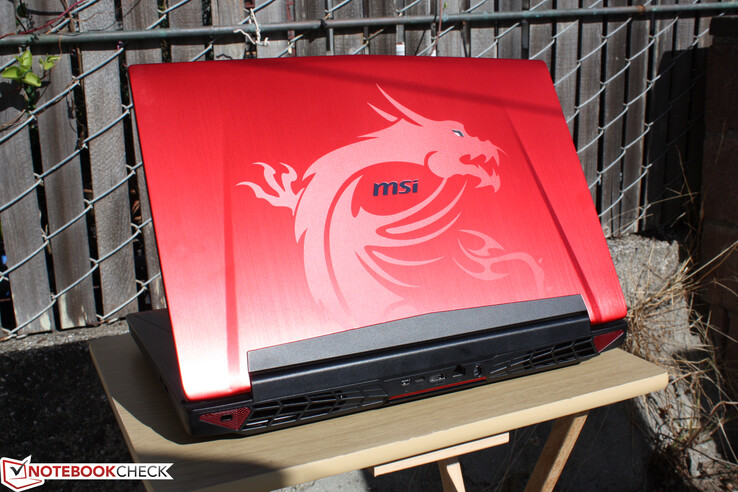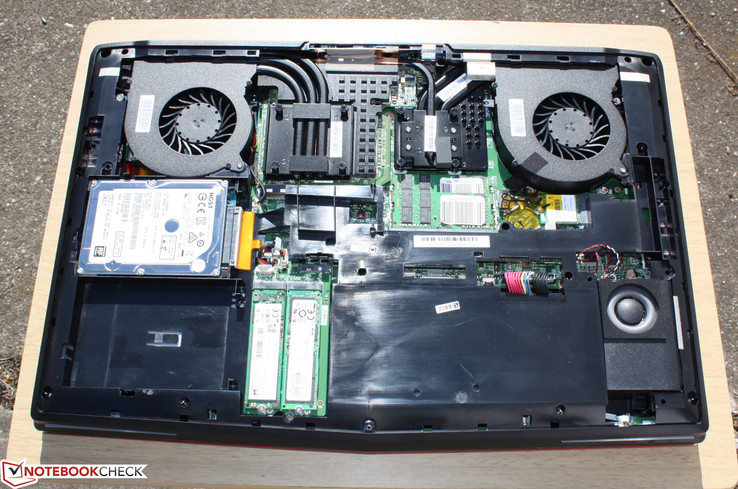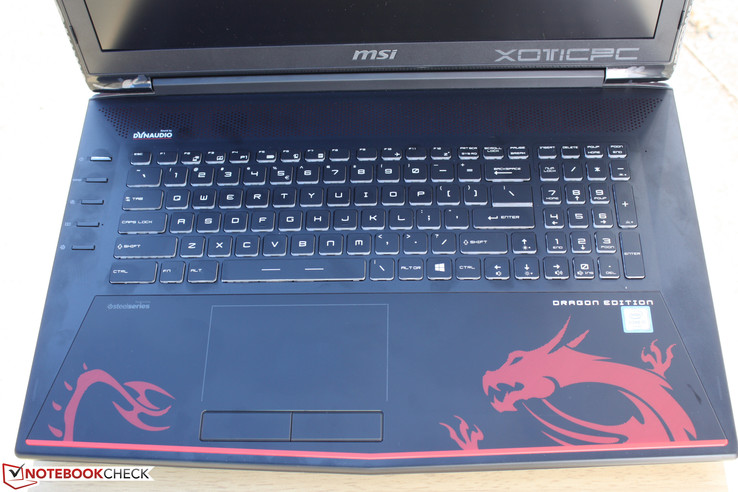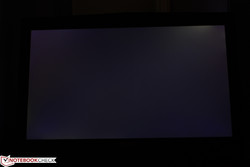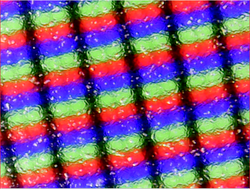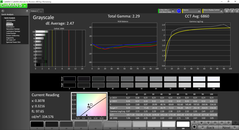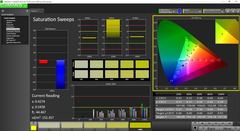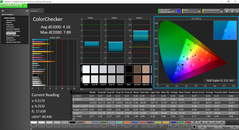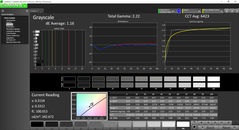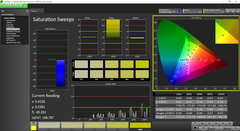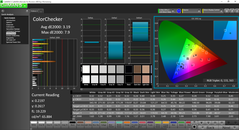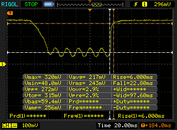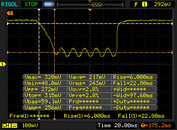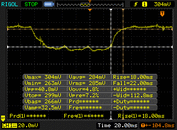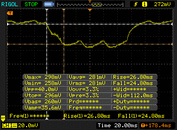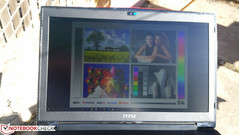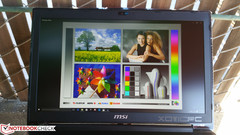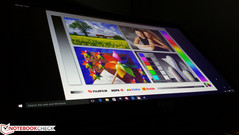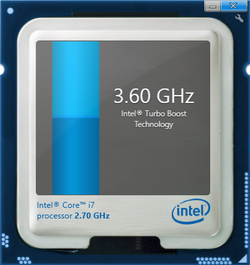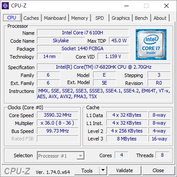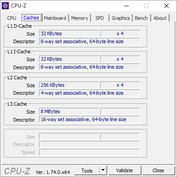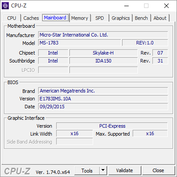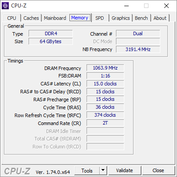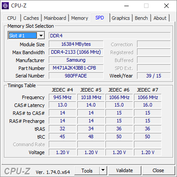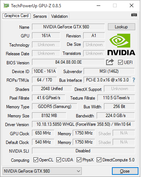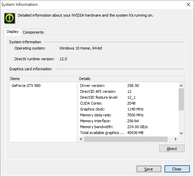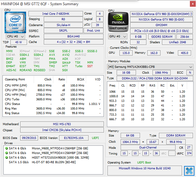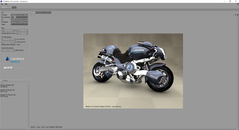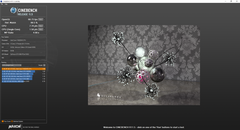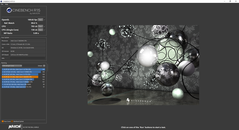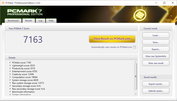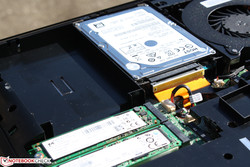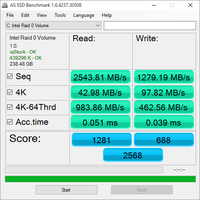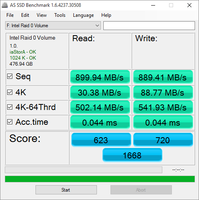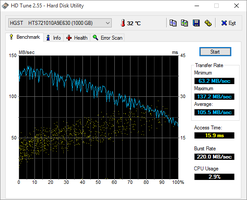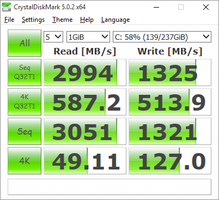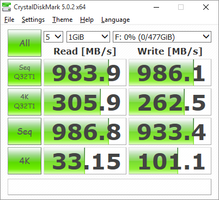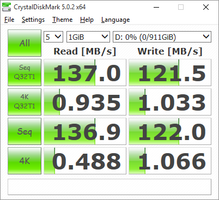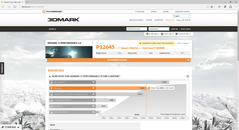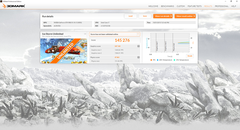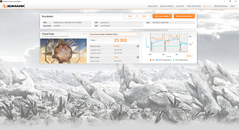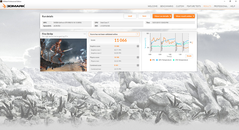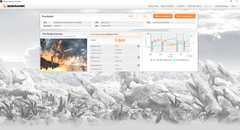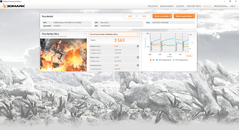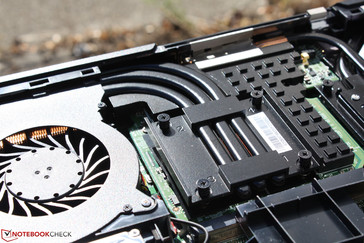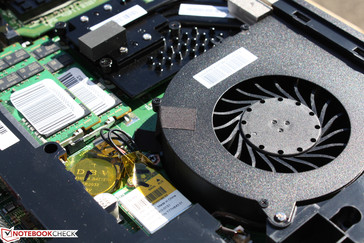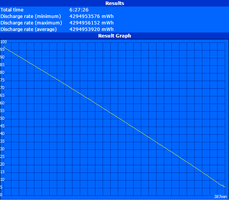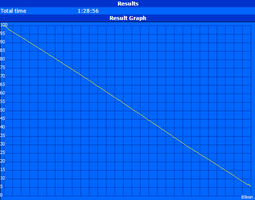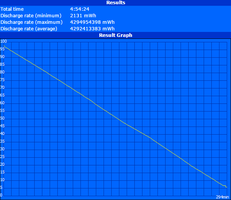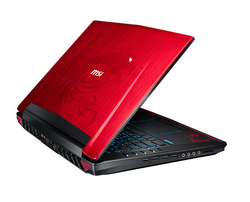Xotic PC MSI GT72S 6QF Dragon Notebook Review
Note: We reviewed a configuration from Xotic PC U.S. There can be differences compared to original manufacturer models in respect of the integrated components (memory, RAM, CPU, GPU, etc.) as well as their configurations. Components may have been overclocked. As a result, there can also be differences in terms of performance, emissions, and battery runtimes. The visual appearance of the devices can differ as well.
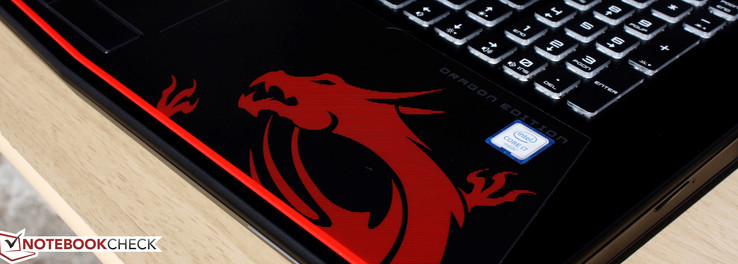
As of late 2015, MSI is one of the first few manufacturers to both announce and ship notebooks equipped with the GeForce GTX 980 GPU. This is largely due to the fact that existing MSI notebooks are already well-equipped to handle desktop-class hardware including the lauded GT72 Dominator and monstrous GT80 Titan.
The GT72S is the Skylake update for the GT72 in a similar manner to the Xotic PC MSI GS60 6QE or GS70 6QE. While the chassis remains largely identical, the changes are almost entirely internal as RAM has been upgraded from DDR3 to DDR4, CPU from Broadwell to Skylake, GPU from GTX 9xxM to GTX 980, and NVMe support for two of the existing M.2 slots.
See our existing review on the GT72S with GTX 980M and other GT72 configurations for a full rundown on the changes and upgrades. For this review update, we'll focus on the performance of the GTX 980 and how much of a boost users can expect.
Case
The GT72S can be configured with either a GTX 980M or a GTX 980, but it's the GTX 980 SKU that gets the special chassis treatment. The classic brushed aluminum black lid is now a deep red with the signature G Series dragon design taking a more flashy approach. Its eye is a transparent plastic cutout that lights up from the display backlight in the same manner as the Apple Logo on many Apple products.
Other than the aesthetic upgrade, the actual skeleton and makeup of the chassis remain identical to the existing GT72. In other words, build quality is a huge improvement over the older GT70 series and is comparable to the revered ASUS ROG G751. The lid is slightly weaker than its Asus counterpart, though not by an alarming degree.
Connectivity
Physical ports are identical to the GT72 save for the addition of a USB 3.1 Type-C Gen. 2 port. MSI has branded it with the shorter name "SuperPort" and it's also making appearances on the new GS60 and GS70 as well. Users can take advantage of the insane 10 Gbps transfer rate by daisy-chaining 4K monitors or charging devices quickly for those that support it. This particular feature is not available on older gaming notebooks from competing manufacturers.
Communication
WLAN is provided by a dual-band (2x2) Atheros QCA6174 802.11ac M.2 module. Maximum throughput is a theoretical 867 Mbps and Xotic PC offers Bigfoot N1535 and Intel 7260 options as well. Oddly enough, there are no Gigabit configuration options for the notebook.
Accessories
MSI throws in a velvet cloth and an admittedly large backpack for carrying the GT72S while Xotic PC includes copies of stress tests and performance benchmarks specific to this unit. The smaller extras are unfortunately overlooked, such as a disassembly guide.
Maintenance
The panel underneath can be removed with a regular Philips screwdriver and some elbow grease to detach the hinges around the edges and corners. Owners have quick access to core components such as the 2.5-inch SATA bay, 2x SODIMM slots, NVMe M.2 SSDs, and both processing units. Further disassembly is required to access the other two SODIMM and M.2 slots.
Warranty
Xotic PC provides limited warranty for up to 24 months. This is standard for high-end gaming notebooks and is a year longer than the typical Ultrabook. Users who register their purchases will receive one year of accidental damage protection on top of the limited warranty.
Xotic PC provides lifetime labor warranty and a No Dead Pixel policy for an additional $249 and $99, respectively.
Input Devices
Keyboard
Like the recent GS60 update, the GT72S uses keys with translucent edges and corners for a better visual style especially on maximum keyboard brightness. Otherwise, the SteelSeries keyboard provides very quiet keys with acceptable travel. Feedback is on the soft side and could take some time for desktop users to become fully accustomed.
The auxiliary keys allow for quick access to XSplit, Turbo Fan toggling, and manual GPU switch since there is no Optimus. It's a bit disappointing to see no dedicated Macro keys as Alienware and Gigabyte notebooks have them standard.
Touchpad
The ~10.8 x 6.1 cm touchpad is smooth, slightly rubberized, and completely flush with the surrounding palm rests. This means that there is no separation in texture or height between the touchpad and the surrounding surface. This looks good for a gaming notebook, though not exactly ideal from an ergonomic point-of-view. Multi-touch gestures are supported via Synaptics V7.5 and can recognize up to three-finger gestures.
The dedicated mouse keys are large, but offer very short travel and poor feedback. The force required to input a click is on the heavy side and can make prolonged use uncomfortable.
Display
Display measurements on our US model more of less confirm our measurements on the European model. Brightness and contrast are superior to many competing 17.3-inch notebooks including those from Aorus and Eurocom. We can notice no significant grains or screen-door effect on the panel, but there is some slight backlight bleeding around the bottom and top corners of the display on our particular test unit.
Higher resolution options above 1080p are not yet available for the GT72S, so users must rely on external monitors for gaming on higher resolutions. The default 75 Hz display supports Nvidia G-Sync.
| |||||||||||||||||||||||||
Brightness Distribution: 85 %
Center on Battery: 356.7 cd/m²
Contrast: 1265:1 (Black: 0.282 cd/m²)
ΔE ColorChecker Calman: 4.16 | ∀{0.5-29.43 Ø4.77}
ΔE Greyscale Calman: 2.47 | ∀{0.09-98 Ø5}
85% sRGB (Argyll 1.6.3 3D)
56% AdobeRGB 1998 (Argyll 1.6.3 3D)
63% AdobeRGB 1998 (Argyll 3D)
86.1% sRGB (Argyll 3D)
67.6% Display P3 (Argyll 3D)
Gamma: 2.29
CCT: 6860 K
| MSI GT72S 6QF 1920x1080 | Schenker XMG U726 3840x2160 | Eurocom P7 Pro 1920x1080 | Razer Blade Pro 17 inch 2015 1920x1080 | Aorus X7 Pro 1920x1080 | MSI PE70-2QEi581 1920x1080 | |
|---|---|---|---|---|---|---|
| Display | 34% | -1% | 5% | 2% | -2% | |
| Display P3 Coverage (%) | 67.6 | 87 29% | 67.2 -1% | 69.7 3% | 67.9 0% | 66.6 -1% |
| sRGB Coverage (%) | 86.1 | 100 16% | 85.3 -1% | 90.4 5% | 88.7 3% | 84.6 -2% |
| AdobeRGB 1998 Coverage (%) | 63 | 98.9 57% | 62.4 -1% | 66.8 6% | 64.9 3% | 61.9 -2% |
| Response Times | ||||||
| Response Time Grey 50% / Grey 80% * (ms) | 43 ? | |||||
| Response Time Black / White * (ms) | 29 ? | |||||
| PWM Frequency (Hz) | ||||||
| Screen | -3% | -19% | -101% | -19% | -24% | |
| Brightness middle (cd/m²) | 356.7 | 330 -7% | 335.4 -6% | 315.5 -12% | 318 -11% | 305 -14% |
| Brightness (cd/m²) | 326 | 327 0% | 319 -2% | 295 -10% | 283 -13% | 265 -19% |
| Brightness Distribution (%) | 85 | 86 1% | 88 4% | 87 2% | 82 -4% | 79 -7% |
| Black Level * (cd/m²) | 0.282 | 0.38 -35% | 0.384 -36% | 0.822 -191% | 0.54 -91% | 0.5 -77% |
| Contrast (:1) | 1265 | 868 -31% | 873 -31% | 384 -70% | 589 -53% | 610 -52% |
| Colorchecker dE 2000 * | 4.16 | 3 28% | 5.14 -24% | 12.21 -194% | 3.79 9% | 4.83 -16% |
| Greyscale dE 2000 * | 2.47 | 3.81 -54% | 4.44 -80% | 13.4 -443% | 2.35 5% | 3.29 -33% |
| Gamma | 2.29 96% | 2.52 87% | 1.98 111% | 2.39 92% | 2.37 93% | 2.39 92% |
| CCT | 6860 95% | 6306 103% | 6464 101% | 19530 33% | 6775 96% | 7080 92% |
| Color Space (Percent of AdobeRGB 1998) (%) | 56 | 88 57% | 56.1 0% | 59 5% | 58 4% | 56 0% |
| Color Space (Percent of sRGB) (%) | 85 | 100 18% | 85.3 0% | 90.3 6% | 84 -1% | |
| Colorchecker dE 2000 max. * | 5.3 | |||||
| Total Average (Program / Settings) | 16% /
7% | -10% /
-15% | -48% /
-74% | -9% /
-13% | -13% /
-19% |
* ... smaller is better
Color space coverage is a measured 56 percent and 85 percent of the AdobeRGB and sRGB standards, respectively. This is wider than most inexpensive or consumer-grade panels found on cheaper notebooks and is comparable to competing gaming notebooks such as the Asus G751 and Alienware 17 R2. For >95 percent sRGB coverage, we recommend going with the MSI PX60 Prestige series or even a barebones Clevo route.
Further analyses with an X-Rite spectrophotometer reveal accurate colors and grayscale without any end-user calibration. Colors become less accurate the higher the saturation level, which implies imperfect sRGB coverage. Yellow and Orange colors are the least accurate colors.
The built-in MSI True Color tool is the same software as found on the PX60. It provides quick access to multiple pre-set profiles and allows some user adjustments such as Gamma, Contrast, Blue Intensity, and individual changes to the three primary colors.
Photosensor measurements show no use of pulse-width modulation even when on the lowest brightness setting. Meanwhile, response times are good for an IPS panel at a measured 6 ms from black to white. Moving from white to black or from grays will be slower and closer to 20 ms.
Outdoor use is, of course, not recommended if it can be avoided. Maximum brightness is good enough for use when under shade. If under sunlight, the screen quickly becomes washed out.
Viewing angles are excellent due to the use of an IPS panel. It's worth noting that the hinges open up to 180 degrees unlike on the Asus G751.
Performance
The GT72S carries a 2.7 GHz Core i7-6820HK and a GTX 980 GPU, both of which are unlocked for overclocking potential. When the system is idling and on Power Saver mode, the CPU and GPU will run at just 800 MHz and 135/162 MHz core/memory, respectively. Otherwise, they are each wholly capable of running at their respective maximum Turbo Boost speeds. For the CPU, this will be up to 3.2 GHz for all active cores or higher when overclocked and a recorded 1299 MHz for the GPU.
It's also worth noting that the system carries the 200 W version of the GTX 980 as opposed to the 180 W version. This card is physically larger than your typical MXM 3.0b graphics card, though the pins remain identical.
As for system RAM, our test model is equipped to its maximum with 64 GB of dual-channel DDR4 RAM. Unlike pre-Skylake gaming notebooks, each of the four SODIMM slots now support memory modules of up to 16 GB.
Processor
Raw CPU performance on stock clock rates is about 10 percent to 16 percent ahead of the Core i7-4720HQ Haswell commonly found in gaming notebooks of yesteryear according to CineBench benchmarks. Meanwhile, the Eurocom P5 Pro and its "proper" desktop Core i7-4790K CPU outperforms our MSI by over 20 percent and 30 percent in multi-threaded and single-threaded operations, respectively. Performance is more or less similar to the i7-5700HQ Broadwell.
| Cinebench R11.5 | |
| CPU Multi 64Bit (sort by value) | |
| MSI GT72S 6QF | |
| Eurocom P5 Pro Extreme | |
| MSI GT80 Titan SLI | |
| Eurocom X8 | |
| MSI GS70 6QE-036XPL | |
| Asus G501JW | |
| CPU Single 64Bit (sort by value) | |
| MSI GT72S 6QF | |
| Eurocom P5 Pro Extreme | |
| MSI GT80 Titan SLI | |
| Eurocom X8 | |
| MSI GS70 6QE-036XPL | |
| Asus G501JW | |
| Cinebench R15 | |
| CPU Multi 64Bit (sort by value) | |
| MSI GT72S 6QF | |
| Eurocom P5 Pro Extreme | |
| MSI GT80 Titan SLI | |
| Eurocom X8 | |
| MSI GS70 6QE-036XPL | |
| Asus G501JW | |
| CPU Single 64Bit (sort by value) | |
| MSI GT72S 6QF | |
| Eurocom P5 Pro Extreme | |
| MSI GT80 Titan SLI | |
| Eurocom X8 | |
| MSI GS70 6QE-036XPL | |
| Asus G501JW | |
| wPrime 2.10 - 1024m (sort by value) | |
| MSI GT72S 6QF | |
| Eurocom P5 Pro Extreme | |
| Eurocom X8 | |
| MSI GS70 6QE-036XPL | |
| Asus G501JW | |
| Super Pi Mod 1.5 XS 32M - 32M (sort by value) | |
| MSI GT72S 6QF | |
| Eurocom P5 Pro Extreme | |
| MSI GT80 Titan SLI | |
| Eurocom X8 | |
| MSI GS70 6QE-036XPL | |
| Asus G501JW | |
* ... smaller is better
CPU Overclocking
The Core i7-6820HK proves to be nothing special on stock speeds. Thus, we overclocked the CPU in 100 MHz increments through the BIOS and tested for performance and potential stability changes with CineBench R15. The overclocking menu allows for more options than the Eurocom P5 Pro Extreme including BCLK and ring ratio adjustments.
In the end, we were able to safely overclock to 4 GHz for all active cores without resorting to voltage adjustments. CineBench R15 finishes at 170 and 841 points for single-threaded and multi-threaded tests, respectively, compared to 138 and 703 points on stock. The gains are very respectable, but the cost comes at high core temperatures of up to 91 C when running Prime95. Activating Turbo Fan can bring temperatures down to the mid 70 C range, so this feature is highly recommended when overclocking.
System Performance
Our GT72S is within a hair's reach of our current champion in our PCMark 7 database: The Eurocom P5 Pro Extreme. The MSI clocks in at 7163 points in PCMark 7 compared to 7272 points on the Eurocom. Yes, we could have pushed the MSI over the edge with overclocking, but our database numbers are always done on stock settings. Nonetheless, this is objectively one of the fastest pre-configured notebooks available.
It's unfortunate, then, that bootup times are uneven. Armed with a stopwatch, a cold boot on stock BIOS settings can be as short as 19 seconds or as long as over a minute. The delay happens even before the initial MSI logo appears onscreen, so it is likely not a Windows issue.
| PCMark 7 Score | 7163 points | |
| PCMark 8 Home Score Accelerated v2 | 5149 points | |
| PCMark 8 Creative Score Accelerated v2 | 7625 points | |
| PCMark 8 Work Score Accelerated v2 | 5462 points | |
Help | ||
Storage Devices
Like many Clevo models, storage options abound on the GT72S. A total of 6x storage bays (2x NVMe M.2, 2x M.2, 1x 2.5-inch SATA III, 1x SATA I ODD) are available. There is even an empty 2.5-inch space with no pins adjacent to the existing 2.5-inch bay.
Our test model is equipped with 2x 256 GB NVMe Micron M.2 cards in RAID 0 that MSI brands as Super Raid 4. Performance is over twice that of a 2x SATA III RAID 0 setup with sequential read and write speeds of 2543 MB/s and 1279 MB/s, respectively, according to AS SSD. It naturally sits on top as one of the fastest setups in our HDD/SSD database.
Our unit also comes with 2x 512 GB M.2 cards in standard SATA III RAID 0 and a 1 TB HGST HDD for additional storage. The 7200 RPM drive returns an average transfer rate of just over 105 MB/s according to HD Tune.
GPU Performance
3DMark benchmarks put our MSI Dragon well ahead of the competition. SLI systems like the Aorus X7 Pro (GTX 970M SLI) or MSI's own GT80 (GTX 980M SLI) still clock in faster than our GT72S by 10 percent and 40 percent, respectively, in Fire Strike. Compared to a standard GTX 980M, the GTX 980 is almost 30 percent ahead in the same benchmark. The differences are seen in 3DMark 11 as well, though at differing scales.
| 3DMark 06 Standard Score | 28146 points | |
| 3DMark 11 Performance | 12645 points | |
| 3DMark Ice Storm Standard Score | 125241 points | |
| 3DMark Cloud Gate Standard Score | 25302 points | |
| 3DMark Fire Strike Score | 11066 points | |
| 3DMark Fire Strike Extreme Score | 5868 points | |
Help | ||
| 3DMark | |
| Fire Strike Extreme Graphics (sort by value) | |
| MSI GT72S 6QF | |
| Eurocom P7 Pro | |
| MSI GS60 6QE-002US | |
| Eurocom Shark 4 | |
| 1920x1080 Fire Strike Graphics (sort by value) | |
| MSI GT72S 6QF | |
| MSI GT80-2QES32SR311BW | |
| Aorus X7 Pro | |
| Eurocom P7 Pro | |
| MSI GS60 6QE-002US | |
| Alienware 15 (R9 M295X) | |
| Eurocom Shark 4 | |
| 1280x720 Cloud Gate Standard Graphics (sort by value) | |
| MSI GT72S 6QF | |
| MSI GT80-2QES32SR311BW | |
| Aorus X7 Pro | |
| Eurocom P7 Pro | |
| MSI GS60 6QE-002US | |
| Alienware 15 (R9 M295X) | |
| Eurocom Shark 4 | |
Gaming Performance
The GTX 980 is built for gaming on resolutions beyond 1080p. Since the GT72S maxes out at 1080p, users should be able to play practically any game as of 2015 on maximum settings at 60 FPS or better. If playing older and less demanding titles like WoW or DOTA 2, we recommend using Nvidia's Dynamic Scaling Resolution (DSR) for an even crisper image due to the overhead power available. The fact that there's G-Sync support means that users can even game in the 40 - 60 FPS range with DSR active without noticing major screen tears.
For more benchmarks and information on the GTX 980, see our GPU page here and our dedicated review on the notebook graphics card.
| low | med. | high | ultra | |
|---|---|---|---|---|
| Guild Wars 2 (2012) | 56.9 | 61.8 | ||
| Tomb Raider (2013) | 318.9 | 154.5 | ||
| BioShock Infinite (2013) | 175.9 | 110.1 | ||
| Metro: Last Light (2013) | 120.1 | 85.2 | ||
| Thief (2014) | 99 | 80.5 | ||
| Middle-earth: Shadow of Mordor (2014) | 122.5 | 95.3 | ||
| F1 2014 (2014) | 117 | 104 | ||
| Batman: Arkham Knight (2015) | 93 | 68 | ||
| Metal Gear Solid V (2015) | 59.9 | 59.9 |
| Metro: Last Light - 1920x1080 Very High (DX11) AF:16x (sort by value) | |
| MSI GT72S 6QF | |
| MSI GT80-2QES32SR311BW | |
| MSI GT80 Titan SLI | |
| MSI GS60 6QE-002US | |
| Eurocom Shark 4 | |
| Tomb Raider - 1920x1080 Ultra Preset AA:FX AF:16x (sort by value) | |
| MSI GT72S 6QF | |
| MSI GT80-2QES32SR311BW | |
| MSI GT80 Titan SLI | |
| MSI GS60 6QE-002US | |
| Eurocom Shark 4 | |
| BioShock Infinite - 1920x1080 Ultra Preset, DX11 (DDOF) (sort by value) | |
| MSI GT72S 6QF | |
| MSI GT80-2QES32SR311BW | |
| MSI GT80 Titan SLI | |
| MSI GS60 6QE-002US | |
| Eurocom Shark 4 | |
| Thief - 1920x1080 Very High Preset AA:FXAA & High SS AF:8x (sort by value) | |
| MSI GT72S 6QF | |
| MSI GT80-2QES32SR311BW | |
| MSI GT80 Titan SLI | |
| MSI GS60 6QE-002US | |
| Eurocom Shark 4 | |
| Middle-earth: Shadow of Mordor - 1920x1080 Ultra Preset (HD Package) (sort by value) | |
| MSI GT72S 6QF | |
| MSI GT80-2QES32SR311BW | |
| MSI GT80 Titan SLI | |
| MSI GS60 6QE-002US | |
| Eurocom Shark 4 | |
| Batman: Arkham Knight - 1920x1080 High / On AA:SM AF:16x (sort by value) | |
| MSI GT72S 6QF | |
| MSI GT80 Titan SLI | |
| Schenker XMG U506 | |
| Metal Gear Solid V - 1920x1080 Extra High / On (sort by value) | |
| MSI GT72S 6QF | |
| Schenker XMG U506 | |
| MSI GS60 6QE-002US | |
| Eurocom Shark 4 | |
Stress Test
We stress the GT72S with Prime95 and FurMark to see how it can handle extreme stress beyond gaming loads.
With only Prime95 running, the CPU core is able to maintain its maximum Turbo Boost rate of 3.2 GHz and a stable running temperature of ~75 C. These results are very good and practically expected since the i7-6820HK has been designed with overclocking potential. FurMark stress throttles the GPU from its base 1140 MHz to just below 1000 MHz with a maximum core temperature of 84 C.
Running both Prime95 and FurMark simultaneously will have no performance casualties on the CPU, though GPU speed will drop slightly. CPU temperature is bumped higher to the 86 C mark. Activating Turbo Fan mode will have no effect on actual performance, but will aid tremendously in core temperatures.
Unigine Heaven stress is much more representative of gaming loads. Under these conditions, the GPU is able to maintain Boost in the 1261 - 1299 MHz range. CPU temperatures are lower as well in the mid 60s, though GPU temperature is higher than we would have liked at 84 C.
Running on battery power will have an immense performance impact on both the CPU and GPU. We do not recommend gaming off of mains whenever possible.
| CPU Clock (GHz) | GPU Clock (MHz) | Maximum CPU Temperature (C) | Maximum GPU Temperature (C) | |
Prime95 Stress |
3.2 | -- | ~75 | -- |
FurMark Stress |
-- | 961 - 999 | -- | ~84 |
Prime95 + FurMark Stress |
3.2 | 961 - 986 | ~86 | ~85 |
Prime95 + FurMark Stress (Turbo Fan active) |
3.2 | 961 - 986 | ~69 | ~78 |
Unigine Heaven Stress |
3.2+ | 1261 - 1299 | ~66 | ~84 |
Unigine Heaven Stress (Battery Power) |
0.9 - 1.5 | 297 | ~54 | ~59 |
Emissions
System Noise
As one can imagine, the cooling system for the GT72S is MSI's secret sauce for making the whole thing work. Its seven heat pipes and massive twin ~65 mm fans are large, though not as thick or developed as the ones on the Clevo P870DM or the Eurocom P5 Pro.
Fan noise is reserved for such a large machine and will only become loud when the processing load demands it. That doesn't mean the fans are silent, however, as they never idle and are always audible at a measured 33 dB(A) at the lowest. The fans do not pulsate but will infrequently increase in speed before slowing down to their minimum levels again when under light-medium loads. The fans will briefly run at maximum speed each time when powering on the notebook.
Fan noise under gaming loads is louder than the GT72S with the GTX 980M at just under 40 dB(A). The fans are dynamic and will gradually increase and decrease during gameplay. This is quieter than many thin-and-light gaming notebooks where 50 dB(A) can be common such as on a Gigabyte or Razer, but is still no match for the G751. The large fans are definitely not as high-pitched as the smaller and thinner ones, and so are subjectively less of an annoyance when gaming. At its worst, fan noise can be as high as 46 dB(A). Enabling Turbo Fan will blast fan noise to a steady 52.2 dB(A).
Noise level
| Idle |
| 33.1 / 33.3 / 37 dB(A) |
| Load |
| 39 / 52.2 dB(A) |
 | ||
30 dB silent 40 dB(A) audible 50 dB(A) loud |
||
min: | ||
Temperature
When on Power Saver mode and with the dGPU active, surface temperatures are flat across the board. The girth and roomy internals of the GT72S are important factors to keeping temperatures as low as possible. This is compared to the super-thin Aorus X7 Pro where surface temperatures are well above 40 C when idling since the heat pipes are in such close proximity to surrounding surfaces.
When under unrealistic maximum loads (Prime95 + FurMark), we were able to record a surface temperature of 49 C on the bottom rear of the unit. The keyboard and palm rests remain cool, so the MSI exhibits excellent cooling habits. Anything in the vicinity of the rear ventilation grilles will become very warm as the system fans are quite large.
(+) The maximum temperature on the upper side is 39.8 °C / 104 F, compared to the average of 40.4 °C / 105 F, ranging from 21.2 to 68.8 °C for the class Gaming.
(-) The bottom heats up to a maximum of 49 °C / 120 F, compared to the average of 43.3 °C / 110 F
(+) In idle usage, the average temperature for the upper side is 25.8 °C / 78 F, compared to the device average of 33.9 °C / 93 F.
(+) The palmrests and touchpad are cooler than skin temperature with a maximum of 25.2 °C / 77.4 F and are therefore cool to the touch.
(+) The average temperature of the palmrest area of similar devices was 28.8 °C / 83.8 F (+3.6 °C / 6.4 F).
Battery Life
Runtimes are very good considering the size of the system as long as it is running on integrated graphics. Users can get just shy of five hours of constant WLAN use on the 150 nit brightness setting (5/10). Competing 17.3-inch models tend to die out much faster under similar conditions. The battery is non-removable unlike on a large number of Clevo barebones.
| MSI GT72S 6QF 83 Wh | Schenker XMG U726 89 Wh | Eurocom P7 Pro 82 Wh | Razer Blade Pro 17 inch 2015 74 Wh | Aorus X7 Pro 73 Wh | MSI PE70-2QEi581 41 Wh | |
|---|---|---|---|---|---|---|
| Battery runtime | -25% | -34% | 2% | -31% | -30% | |
| Reader / Idle (h) | 6.5 | 2.8 -57% | 2.7 -58% | 8.6 32% | 3 -54% | 5.8 -11% |
| WiFi v1.3 (h) | 4.9 | 2.4 -51% | 4.2 -14% | 2.6 -47% | ||
| Load (h) | 1.5 | 1.6 7% | 1.6 7% | 1.3 -13% | 1.4 -7% | 1 -33% |
Pros
Cons
Verdict
If the 18.4-inch GT80 is too daunting, then the 17.3-inch GT72S is an easy recommendation for any hardcore gamer. Its relatively accessible internals and timid fan characteristics make it a perfect alternative to the popular Asus G751. The Clevo P870DM (Eurocom Sky X9) offers upgradeable desktop CPUs and easier accessibility. Of course, Asus has just launched the G752 as well, so expect to see more comparisons between these models in the very near future.
The Core i7-6820HK is not unlike the weaker Core i7-5700HQ in terms of raw performance. Thus, it's no wonder that the Skylake processor has respectable overclocking potential since its base speeds are not too impressive. Core temperature stays relatively low in the 70 C range (or lower with Turbo Fan) when under Prime95 stress, so the temperature headroom is there for users to tweak clock rates and voltages as desired. This is also where the Turbo Fan feature comes in handy as it is otherwise not necessary when on stock speeds.
We were unfortunately unable to dive into GPU overclocking and deeper stress testing due to some boot issues with our particular review model. Buyers should be wary of potential boot problems similar the ones we experienced here. Despite this, the GT72S remains one of our top gaming notebooks for the year.
MSI has propelled itself into the same ballpark as Clevo and Asus in the enthusiast gaming segment. Accessibility is better than the current ROG series, but Clevo still takes the hardware crown for its larger cooling solution, wider color gamut, and desktop CPU options.
MSI GT72S 6QF
- 02/24/2016 v5 (old)
Allen Ngo


